#CAUSE MEXICAN BLIND CAVE FISH
Explore tagged Tumblr posts
Text
whuh
You live in a house decorated according to your url. What does it look like
#literally Whatever The Fuck#carolina wrens will roost (sleep) basically anywhere#when it comes to making an actual nest though they are a bit more picky and put in more effort#< prevs tags#I'M GONNA DROWN#CAUSE MEXICAN BLIND CAVE FISH#II GONNA CAVE
41K notes
·
View notes
Note
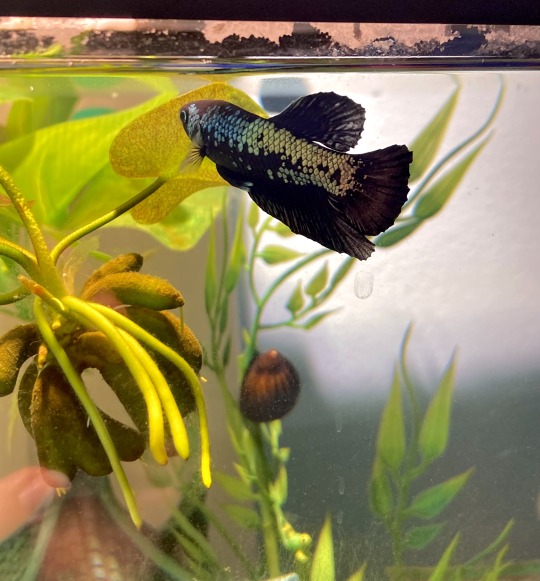

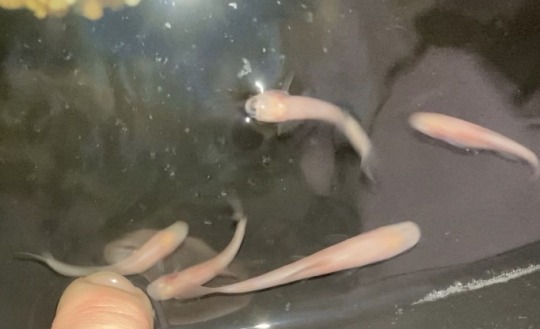
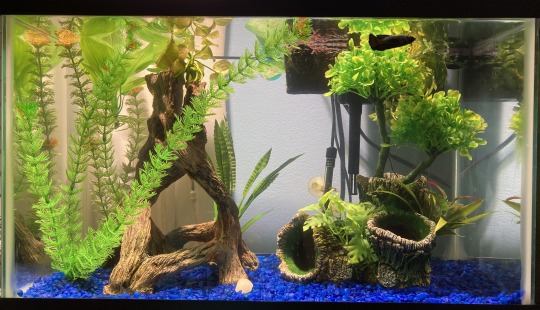
My Samurai betta is named Boreal, he is actually black and white but with his white scales being armored plakat scaling they are really reflective so under leds and certain lighting like aquarium plant grow lights he reflects the rainbow or blue when he’s near the blue substrate rocks. He is my second short finned betta and I’ve found out that they tend to be a lot less prone to fin rot and self inflicted fin biting. I’ve never had a short finned betta fin bite, but I’ve only had two before, the other was an alien betta. He lives in a ten gallon glass tank with 2 Nerite snails and is really chill for a betta he’s the first one I’ve ever had that has never flared once not even at his own reflection which he is indifferent too. Tank temp 80 degrees F.
My other fish tank is a 25 gallon stock tank with Mexican eyeless/blind cave tetra, that’s why it’s a lot more barren and does not have a tank light. Originally I had just two male cave tetra that I got as a pity buy back in January Ozark and Tinaja were in a bare brightly lit tank, getting picked on by the fish that the pet store threw in their tank, and had developed fin rot. So they were in a 5 gallon hospital tank for a while (I also have a platy tank so I keep the hospital tank on stand by) I got this one set up the best I could based on their natural environment and earlier this month got 3 more cave tetra Cryptotora, Linville, and GreyEyes (two girls and a boy, he swam into the net with them at the pet store when I picked out Crypt and Villie so I said why not, package deal, and got him too.) The cave tetra love house flies and are surprisingly great at catching mosquitoes that get in the house. But they’ll pretty much eat anything. It’s my coldest tank too at 74.2 degrees F and they love hard water like livebearers (guppies, platys, swordtails, and mollies). The cave fish also have a gland on top of their brain that can sense light you can actually see it through their skull it’s the orangish part on their head.

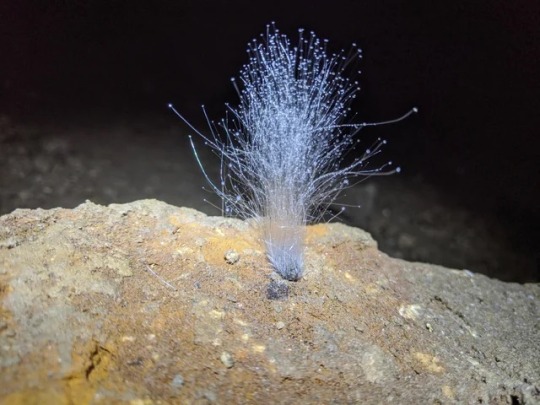
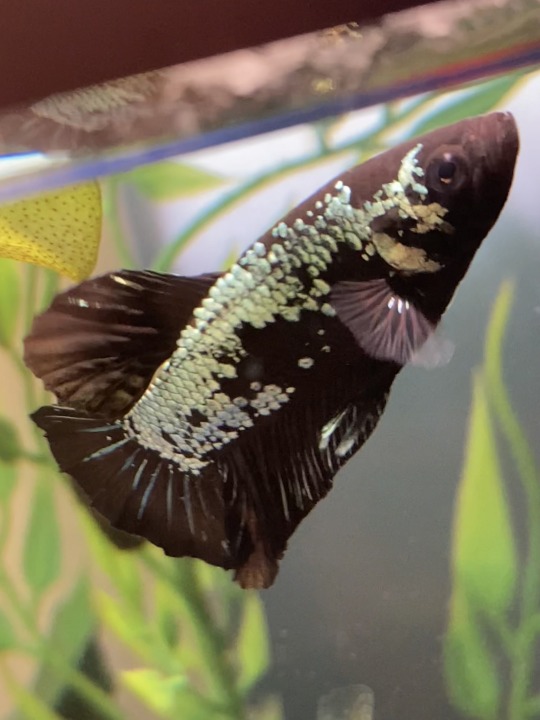
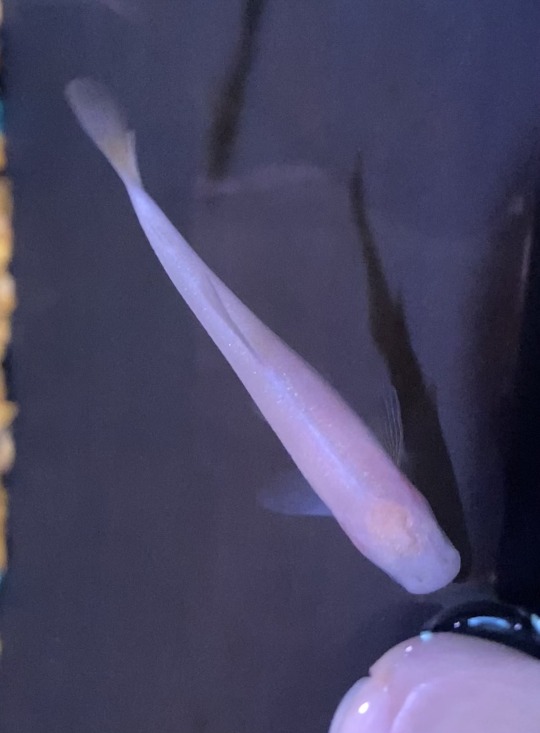
Sorry for the ramble, last thing I swear: Cave tetras are being used in diabetes research because by all accounts and data they should have really bad diabetes and fatty liver disease but lack the symptoms and scarring on their liver. Every meal they eat skyrockets their blood sugar and once they’ve digested it their blood sugar plummets and is converted to excess fat which is theorized to be an adaptation for survival in the harsh cave conditions where they can go months without food. They also have verbal communication via clicks and even have shoal/ cavern specific accents. My cave tetra are captive bred but all originate from the same cave system so when I introduced them to each other even with them being from separate clutches and being months apart they immediately integrated with each other and formed a single shoal.
Thank you 😅😂 for letting me info dump. Also hi 👋🏻
beautiful babies
i love betta fish...
very smart on you too it seems! so be proud!
I'd look into aquaculture if im honest to you... rhat is of course if youre college aged/questioning jobs.
(but rhats just cause im an agriculture person
1 note
·
View note
Text
A lopsided face helps this eyeless cave fish navigate | Science



Daniel Berning and Josh Gross
TAMPA, FLORIDA—The pinnacle of beauty to most people is a symmetrical face, one without any major left-right differences. But for blind Mexican cavefish (Astyanax mexicanus), asymmetry may be a lifesaver. That’s because their lopsided skulls may help them feel their way along dark cave walls—similar to a person navigating by touch in the dark. That behavior, presented here this week at the annual meeting of the Society for Integrative and Comparative Biology, suggests being a little “off” can have evolutionary benefits.
Lots of cave dwellers are a bit unbalanced. Cave fish tend to have one eye that is larger than the other, for example, and cave crickets have different size antennae. Some researchers wondered whether left-right differences might help these creatures get around.
They scanned the skulls of A. mexicanus fish from three caves in Mexico. Their computerized tomography scans revealed most fish skulls bent slightly to the left, giving the right side of their faces slightly more exposure. Other tests showed these fish tended to drift along the right-hand side of cave walls, presumably using the larger side of their faces to feel their way in the dark.

Amanda Powers and Josh Gross
Next, the researchers counted mechanical sensors known as neuromasts in the heads of embryonic fish. These sensors, or “nerve buttons,” detect water flow and sometimes vibrations. Blind fish had more—and larger—neuromasts than fish of the same species that lived on the surface, they reported.
To discover the genetic basis for the difference, they then bred the surface fish with the cave fish; those descendants with extra neuromasts tended to have a higher expression of a gene called Mn1. In mice, defective Mn1 leads to abnormal facial bones. In the fish, the extra neuromasts usually show up where bones have grown cock-eyed, leading the scientists to think neuromasts may somehow cause developing bone to misform.
That could have implications for fish, mice, and even humans, who are affected by 700 so-called “craniofacial” syndromes. As the researchers continue to investigate the connection between neuromasts, bone asymmetry, and behavior, they hope to clarify how developing sensory and skeletal tissues interact to cause irregularities in the skull—some of them more useful than others.
New post published on: https://www.livescience.tech/2019/01/05/a-lopsided-face-helps-this-eyeless-cave-fish-navigate-science/
1 note
·
View note
Text
Blind cavefish seem to ignore insulin without health consequences

Enlarge (credit: Zachary Zakibe)
The Mexican tetra comes in different flavors. In normal river habitats, it’s a small, standard-looking, silvery fish. But some groups within the species have made their home in dark, food-scarce caves. Evolution has quickly rid these groups of their resource-hungry eyes and turned them into pinkish, chubby, blind cavefish—with a bunch of metabolic changes that help them survive in the extreme environment.
A paper in Nature this week reports that the cavefish are resistant to insulin, a condition that can cause damage on its own and is often a precursor to diabetes. But the fish somehow don’t suffer the same kinds of tissue damage that humans do we when have insulin resistance. The authors of the paper, led by Harvard geneticist Misty Riddle, report on how they tried to get to the bottom of the genetic mutations that contribute to this metabolic mystery. Their results show just how much variety exists in how different species respond to insulin—and that studying these fish more could help our understanding of diabetes.
High blood sugar
After you eat something, your blood sugar rises, and your pancreas releases insulin to deal with the increase. The insulin binds to specialized receptors, found on the surfaces of muscle, fat, and liver cells, telling them to absorb glucose from the blood. In between meals when blood glucose levels drop, a different hormone (glucagon) prompts the liver to release its stored glucose back into the blood.
Read 9 remaining paragraphs | Comments
Blind cavefish seem to ignore insulin without health consequences published first on https://medium.com/@HDDMagReview
0 notes
Text
Blind cavefish seem to ignore insulin without health consequences

Enlarge (credit: Zachary Zakibe)
The Mexican tetra comes in different flavors. In normal river habitats, it’s a small, standard-looking, silvery fish. But some groups within the species have made their home in dark, food-scarce caves. Evolution has quickly rid these groups of their resource-hungry eyes and turned them into pinkish, chubby, blind cavefish—with a bunch of metabolic changes that help them survive in the extreme environment.
A paper in Nature this week reports that the cavefish are resistant to insulin, a condition that can cause damage on its own and is often a precursor to diabetes. But the fish somehow don’t suffer the same kinds of tissue damage that humans do we when have insulin resistance. The authors of the paper, led by Harvard geneticist Misty Riddle, report on how they tried to get to the bottom of the genetic mutations that contribute to this metabolic mystery. Their results show just how much variety exists in how different species respond to insulin—and that studying these fish more could help our understanding of diabetes.
High blood sugar
After you eat something, your blood sugar rises, and your pancreas releases insulin to deal with the increase. The insulin binds to specialized receptors, found on the surfaces of muscle, fat, and liver cells, telling them to absorb glucose from the blood. In between meals when blood glucose levels drop, a different hormone (glucagon) prompts the liver to release its stored glucose back into the blood.
Read 9 remaining paragraphs | Comments
Blind cavefish seem to ignore insulin without health consequences published first on https://medium.com/@CPUCHamp
0 notes